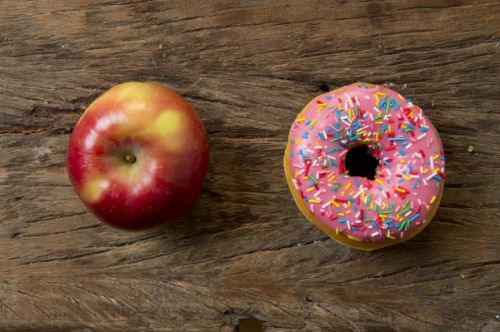Whether you’re following along with us on this journey or just seeing this for the first time, I’m going to share some of the detriments of sugar on the body. I’ve had questions from people these last few weeks about fruit sugar and grains. Yes, these also have a high sugar count, but they also contain other components so that the sugar doesn’t affect changes in physiology as acutely as refined sugar or corn syrup.
Additionally fruits have added health benefits like minerals and anti-oxidants that we’d like to keep in our diets so that we can enjoy what nature gave us. My caveat with fruit is this: if one is working on eliminating Candida or working on an auto-immune disease…then that’s a whole other discussion that I won’t be addressing here, but it is something that one may want to consider eliminating in these cases.
In this 40 days I’m addressing processed and refined white sugar and corn syrup because these products have been stripped from their natural state and introduced into our foods in such a high state that our bodies aren’t able to process them quickly enough.
Sugar, in it’s natural state, is highly dense in minerals and vitamins and is actually healthy to eat (in small quantities). When sugar cane is processed to make granulated sugar, all of the minerals that help our body to break it down and use it are stripped away. When we consume sugar, our body actually pulls minerals out to help metabolize it. Minerals like Potassium, Calcium (taken from the bones and teeth), and Magnesium are pulled from our bodies so that the blood can attempt to regain a normal state of acid/alkaline balance. Does this lead to any disease process that you know of? ……Osteoporosis, dental decay?
Here are a few facts for you to digest:
- The average American consumes 140 pounds of sugar a year
- A 12 ounce can of regular Coke contains 39 grams of total sugar or 9 1/3 teaspoons of sugar
- Because sugar is an ’empty’ calorie ‘food’, meaning one doesn’t feel satiated after drinking it, people will eat just as much food to satisfy their feelings of hunger. So, this means that if you drink a soda with 9 1/3 tsp of sugar, you’re going to eat a full meal or snack along with that
- 2 out of 3 adults and 1 out of 3 children in the US are obese overweight and consumption of sugary drinks (including sports drinks and juices) are attributed to this increase in weight
- The blueberry muffins from the most popular coffee shop in the US contains 29 grams of sugar. Do you know how much that is? It’s 7.25 teaspoons of sugar!!!
In today’s post, this is what I’d like my take-home message to be for you…When you look at labels (which I hope you’re doing now) as you’re buying your food, start looking at how many grams of sugar is contained in what you’re buying. This is how you convert …..and for those of you in Europe I think you already think in grams, so you’re golden on this…from grams to teaspoons. For me, my brain doesn’t think in ‘grams’ so it doesn’t mean as much to me. I tend to stay away from foods that contain more than 4 grams of sugar, and if I’m willing to splurge on a treat, I don’t actually look at the grams at all and just have fun. But, there is so much hidden sugar, as you saw in the ‘muffin’ listed above. Many of us are fooled into thinking that something says that it’s a ‘muffin’ or cereal, that it’s supposed to be healthier. But it’s not. The conversion is this:
|
My Challenge to You:
- Start reading labels!!! Everything you purchase, take note of how many grams of sugar you’re consuming when you’d be eating that product.
- Use the conversion of ‘4 grams of sugar=1 teaspoon’ to decide if you want to be eating that much sugar. If you need your calculator, take it. You divide the number of grams of sugar listed on the label and then divide by 4. This will give you amount in teaspoons.
- I encourage you to take control over and decide how much sugar you want to ‘let in’ to your system.
- Remember that what you purchase are the ‘known’ sugars. When you’re out to eat, you have no control over how much sugar is going into your food.
- And if you want to share, we’ve got discussions going on my Facebook page that you’re welcome to join us
You’re fantastic! Keep up the little or big changes that you’re making in your life! It all counts. See more regular updates and health tips on my Facebook page.
I hope you’ve enjoyed this and I’d love to hear back from you on any of the practices that you decide to implement from these emails!
Dr. Arjan

